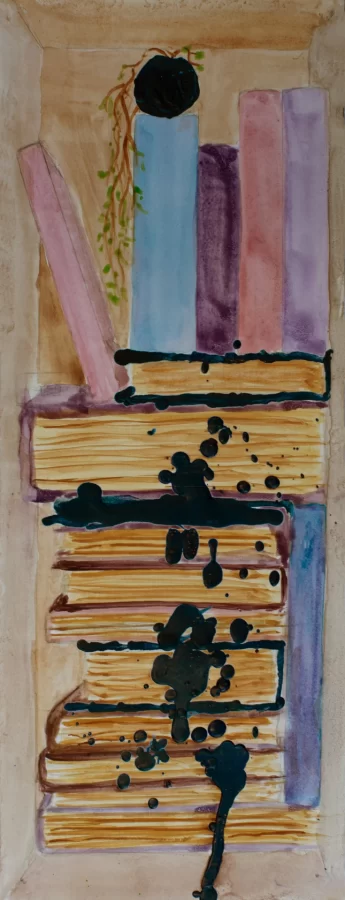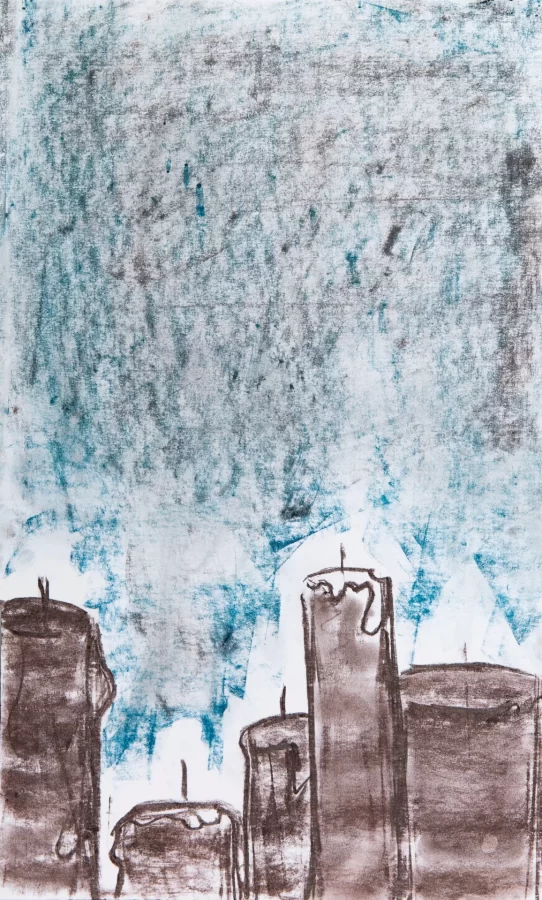Olivia Rabin
From a young age, I was fascinated by nature and the fantastical. This and the works by people similarly inspired by the natural world inspire my current work. While I am interested in many different things, I am always working to visualize them to help me understand how I connect them internally. In my work, I am trying to synthesize my own process into something tangible and observable. I am exploring the connections between my headspace, the act of expression, and the physical world.
I want to explore the emotions and sensations of the world around me, being captivated by nature and the fantastical. I love the mysterious blues and otherworldly qualities of water, especially found in oceans and waterfalls. I am thoroughly enchanted by them. This was only heightened by my favorite creative works like The Blue Planet by David Attenborough. This film not only allowed me to see the ocean’s depths in ways I had never seen before but also showed me ways in which form can create fantastical emotions out of the real. Works like Hayao Miyazaki’s Laputa: Castle in the Sky expand on this in artistic and sensory ways that become their own mythology. Works by artists like Heikala and Gabriel Picolo expand upon mundane elements of reality, abstracting them into the fantastical. Heikala’s illustrations often explore the magic in mundane moments by abstracting an element like size, time, or location to convey an emotion fantastically. In Picolo’s Icarus and the Sun, the already metaphorical wax of Icarus’ wings becomes more emotional as Icarus’s body is made of wax and the sun becomes his lover. Wax is quite captivating for me as its qualities are intrinsically related to water. Wax flows like water but as it cools and solidifies it almost freezes a moment in time and space allowing for the magic to be captured. In these works, I was able to find connections between my interests in nature, magic, water, and wax. The emotions I feel from these are something that I both want to explore and give back.
I often struggle with the translation of ideas to form. I want each work to be expressed in the medium best suited for it. As my work is driven by emotions and physical sensations, I frequently work based on intuition. That being said, this process is not without planning as I often work on mock versions on a smaller scale. Sometimes these versions then end up becoming part of the work, if not the work itself. The liquid qualities of watercolor, gouache, and ink are sensorily interesting and a logical way for me to convey fluidity which is important to me. The nature of these materials afford me the ability to work in layers which I like to employ in my work.
I am interested in illustrative and abstract work that is rooted in reality while distorting it or finding new meanings. The same ideas in the conversation around film, with its ability to capture some version of reality while also being an abstraction, also resonate with me. I see parallels in physical and digital mediums’ ability to collect objects or aspects of reality while constructing spaces beyond our physical world. The idea of collection and storage as a method of constructing, warping, and destroying meaning is key to my artistic practice. It reminds me of my interests in shelves and storage spaces and how they can create new meanings or sites of connection. These art practices become a physical manifestation of these ideas.
I consider my work experimental, as I try new things that are based on an internal dialogue and database. My art becomes an expression of this dialogue as I attempt to make sense of things that barely make sense to me. I explore how these things are stored in my head like objects of wonder on a shelf.

